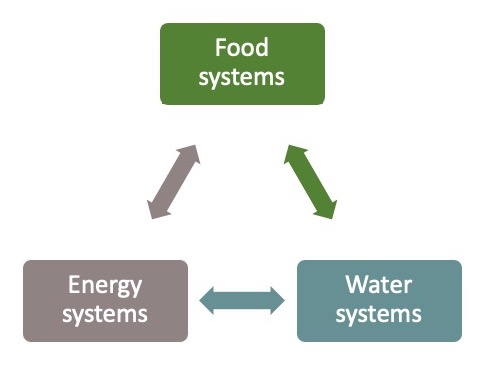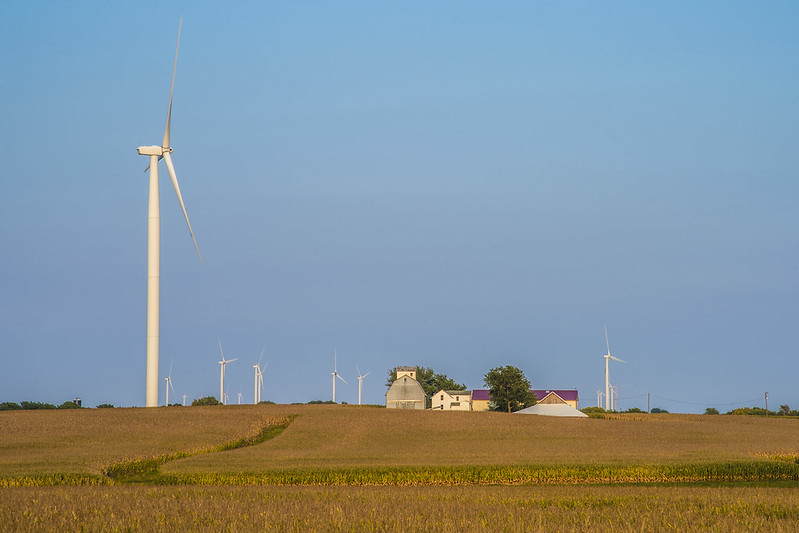By Hannah H. Scherer
February 26, 2024
Photo: USDA, by Preston Keres (public domain)
In this blog post, our Spring 2024 Rural Scholar-in-Residence, Dr. Hannah H. Scherer, shares how she got started with her work in agricultural and STEM education and how it intersects with our mission to advance opportunities for rural schools and communities.
Where Do I Come From?
I do not identify as rural. I was raised in a downtown apartment in Minneapolis, Minnesota, from birth until I was 8 years old. My early adventures were jumping over sidewalk grates, riding escalators, and reaching up high to push the elevator buttons. In fact, I lived exclusively in urban and suburban places, including San Francisco, until moving to Blacksburg, Virginia in 2011.
As an avid hiker, I have spent lots of time throughout my life in nature, enjoying the scenery. When I was studying geology, I lived in remote locations for weeks at a time collecting data. In both contexts, visiting rural places for work or for recreation, I passed through rural towns and sometimes stopped for lunch or groceries. But these experiences were always centered on the place and the landscape, and I did not take the opportunity to get to know the people who called these places home. My ideas on rural were consistent with the imagery that I had encountered in the media, without an understanding of the lived experiences of the people there.
Turning to my role as an educator, I spent several years as a high school science teacher in a suburban setting. I taught my students about concepts such as mountain formation, the water cycle, and photosynthesis, but struggled to find ways to help them connect these ideas to their own lives.
How Did I End Up as the Rural Scholar-in-Residence?
After earning a PhD in geology, I took a job that would completely change my perspective on rurality. Combining my expertise and passions from my background in science and my professional experience as a teacher, I started a new role working with STEM education in the context of agriculture at Virginia Tech. Not only did this role bring me to a college town in a rural part of Virginia, but it gave me the opportunity to work directly with students who come from rural communities. As a faculty member in the Department of Agricultural, Leadership, and Community Education, I get to collaborate with students and colleagues who are passionate about agriculture to advance STEM education in various spaces. I teach courses for students who have goals in agricultural and extension education, many of whom would like to return to their hometowns to live and work. This deep connection to place, family, and community is something that I have come to understand as being very important to many of my rural students.
In 2019, I had the opportunity to contribute ideas to the grant proposal Dr. Amy Azano was working on for SEE VT, a summer enrichment experience for gifted rural youth. I had just started working with a novel framework, the Food-Energy-Water (FEW)-Nexus, and we decided to use it as the focus of the STEM curriculum for the camp. Fortunately, this proposal was funded by the Jack Kent Cooke Foundation, and Dr. Azano and I have been able to work together along with several talented graduate students to make this idea a reality. Throughout this experience, I have had the privilege to learn from the folks in the Center for Rural Education and deepen my knowledge of the theoretical and empirical foundations of rural education and what it really means to center rural in educational program design and research. Now, as the Scholar in Residence, I am continuing to explore the possibilities of the FEW-Nexus for rural education.

How Can the FEW-Nexus help expand possibilities for bridging urban, suburban, and rural STEM education?
Tying all of my personal and professional experiences together helps me articulate what excites me so much about the FEW-Nexus. The FEW-Nexus can be thought of as a complex socio-ecological system, one in which humans and the environment are intricately intertwined such that you can’t consider one without the other. Additionally, the FEW-Nexus necessitates consideration of place because these resources—food, energy, and water—are produced and consumed by real people in real places.
In scientific research spaces, the FEW-Nexus has gained traction as a framework to describe the complex interconnections between these three resources that are essential for modern global society. A crucial part of this understanding recognizes that production and consumption of food, energy, and water resources are not evenly geographically distributed. That is, rural spaces are typically the sites of resource extraction and its associated social and environmental challenges. Decision-making about how to best utilize and conserve precious resources is central to ensuring sustainability and rural community viability into the future.
Similar to the concept of a watershed, scholars have started to articulate the idea of FEWsheds to help people think about the geographic distribution of where these resources are produced and consumed (Brinkley et al., 2023). This is where I think the broad educational potential of the FEW-Nexus lies. In urban and suburban communities, this concept can be used to help students learn about where the food, energy, and water that they consume comes from and how they are interconnected. Students can learn about these interconnections at local, regional, and national scales because the systems are globally connected.
In rural communities, students can ask similar questions about the sources of the food, energy, and water that they consume. Additionally, there are likely local or regional places where these resources are produced that students can learn about, prompting discussions about why production is located there, where the resources end up, and how production in one sector impacts other sectors in their locality.
In our research, my colleagues and I have started to demonstrate that the FEW-Nexus can also encourage learners to take a systems perspective. Through this lens, not only do we see that food, energy, and water systems are intricately connected, but we can consider the ways in which people and places are connected to these resource systems and to each other. I think this is a powerful aim for educators in any space.
Reference
- Brinkley, C., Raj, S., & Raja, S. (2023). Planning for FEWsheds: The Role of Planning in Integrating and Strengthening Food, Energy and Water Systems. Journal of Planning Literature, 38(1), 33-58. https://doi.org/10.1177/08854122221093387
Hannah H. Scherer is an Associate Professor and Extension Specialist for STEM Education in Agriculture in the Department of Agricultural, Leadership, and Community Education at Virginia Tech. She is the Center for Rural Education’s second rural scholar-in-residence for the Spring 2024 semester.



